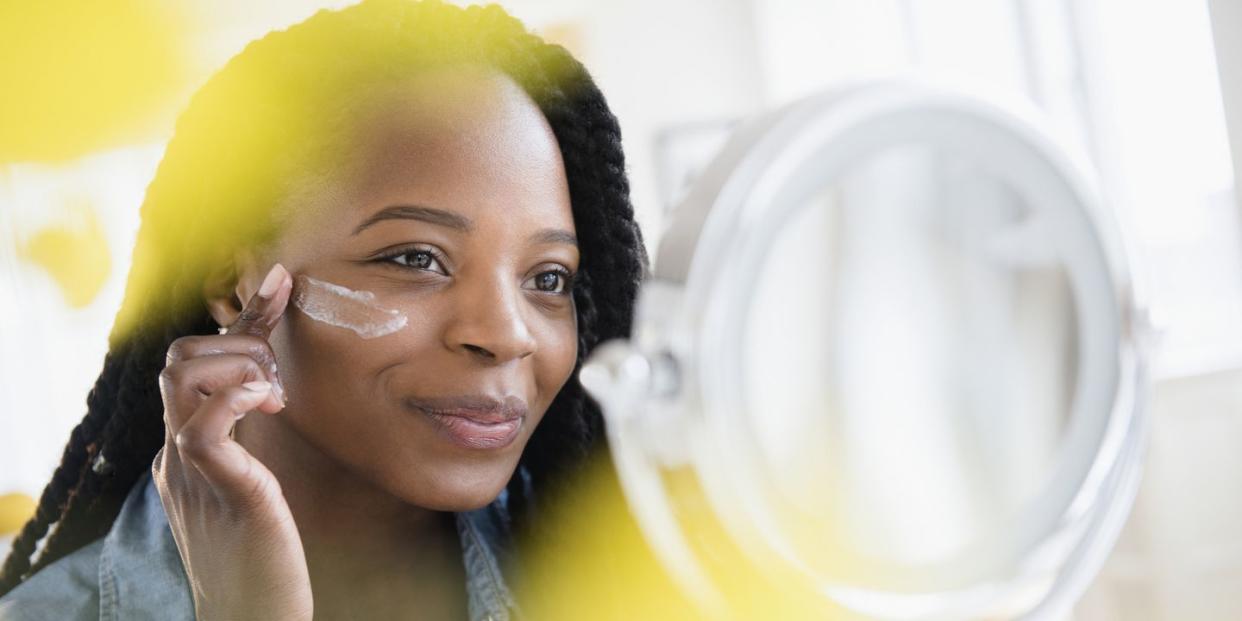The Difference Between Chemical and Physical Sunscreen, Explained

There's no doubt that sunscreen is essential. Not only does SPF protect against the sun’s harmful rays, it’s also one of the best antiaging products you can buy. However, when it comes to the question of whether physical or chemical formulas are better, the answer isn't quite as clear.
There are no studies to indefinitely tell you whether chemical or mineral sunscreen formulas are better for you, yet everyone seems to have an opinion on what you should be wearing. The bottom line: “I believe that they are both safe to use but in order for sunscreen to be the most effective, you just have to be wearing one of them,” says ,” says Marina Peredo, M.D., a dermatologist in NYC.
Amidst all the formulas available it can be difficult to choose, especially since different formulas protect skin in different ways. And, like all beauty products, there are pros and cons to each, which can really leave you in a conundrum on what to buy.
This is exactly why the most effective way to navigate the sunscreen aisle is to know your sun protection basics, namely the difference between chemical and physical sunscreen. Once you understand how they vary, it’s easier to choose a bottle that’s suited for your needs and lifestyle. Below, find the derm-approved answers to all your biggest SPF questions, so you don’t get burned by the wrong decision.
Chemical sunscreens absorb sun rays while mineral sunscreens reflect them away.
“Mineral sunscreens are considered physical blockers (look for zinc oxide and titanium dioxide) because they sit on the surface of the skin and work by reflecting away ultra-violet rays,” says Jacqueline Berliner, M.D., a dermatologist in NYC. “Whereas chemical sunscreens are molecules that sink into skin to absorb ultraviolet rays, turning the energy into heat that is then dissipated.” Dr. Peredo says to “think of chemical sunscreen like a sponge; it absorbs the sun's rays before they can harm the skin.” Chemical formulas consist of organic, carbon-based compounds like oxybenzone, avobenzone, octinoxate and octisalate.
Physical sunscreens may last longer than chemical ones.
While they both shield against UVA and UVB rays, chemical and physical SPF differ in terms of how long their protection lasts. “Chemical blockers tend to degrade quicker when exposed to UV as compared to the physical blockers,” explains dermatologist Ted Lain, MD. “However, many sunscreens now have stabilizing ingredients to make up for that.”
Another thing to factor into your decision is how quickly physical and chemical SPFs begin to work. Since physical sunscreens have active mineral formulations they provide instant protection whereas chemical sunscreens require you to wait 20 to 30 minutes before sun exposure.
However, according to Dr. Lain, what matters even more in terms of protection, isn’t the type of sunscreen you choose, but the level of SPF. “I advise to purchase at least SPF 30 sunscreen, with the knowledge that higher SPFs do a better job at protecting against sunburn,” he continues.
Sensitive skin types may prefer physical sunscreens.
“Physical formulas require fewer ingredients to achieve broad spectrum coverage than chemical blockers,” says Dr. Lain. The shorter ingredient list means less of a risk of irritation. They’re also a better choice for anyone who has heat-sensitive skin disorders like melasma since, according to Dr. Vega, they prevent you from absorbing the sun’s rays, which leads to a decrease in heat production.
However, anyone planning on a sweat-inducing game of beach volleyball or an ocean swim, may want to rely on a chemical sunscreen. “It tends to absorb faster within the skin, making it less likely to wash off,” continues Dr. Vega.
Physical and chemical sunscreens can be used together.
“Most stable sunscreens with broad spectrum coverage take advantage of the benefits of both types of ingredients,” confirms Dr. Lain. And as long as you apply enough product (a nickel-sized amount on your face, a shot glass size amount on your body) every two hours, there shouldn’t be any burns in your future.
“While I believe that sunscreen plays an integral part of sun safe behavior, there are also other ways to protect yourself,” adds Dr. Vega. “These include avoiding the sun during peak hours (10 am to 2pm), sitting in the shade, and using sun protective hats and clothing.” So mentally note all of that next time you’re heading outside as well.
You Might Also Like

